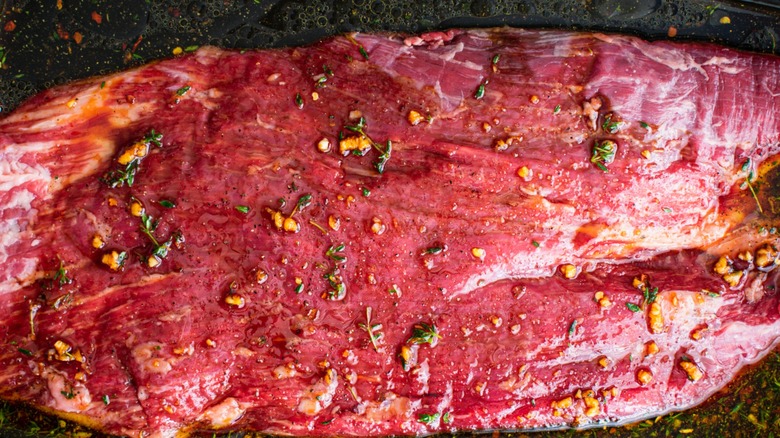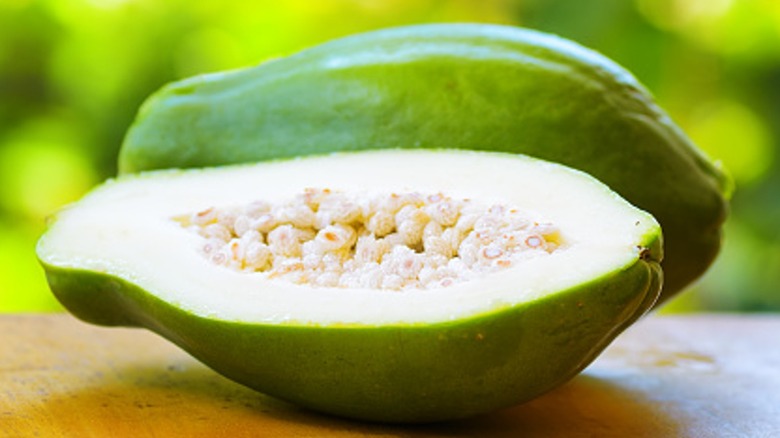Papaya Is Your Secret Weapon For Tenderizing Steak
After purchasing a beautiful piece of meat from your local butcher, eager to create a sumptuous feast, one of the biggest letdowns would be serving up a tough cooked steak. It's a chore to eat it and the flavor just doesn't come through as it should. That's why tenderizing beef before cooking is so important, especially for chewier varieties. That's where papaya comes in — this tropical fruit can transform any tough cut of meat into a melt-in-your-mouth masterpiece. The tenderizing power of papaya lies in an enzyme it carries called papain.
This enzyme is a protease, meaning it breaks down proteins into smaller, more manageable components. The beauty of papain is that it works its magic without compromising the flavor profile of the meat, ensuring that your steak remains a delightful symphony of taste and texture. Interestingly, while papain can be found throughout various parts of the papaya plant, it is in its raw form that this enzyme reigns supreme. As the fruit ripens and matures, the papain content gradually diminishes, emphasizing the importance of selecting green papaya for optimal tenderizing results.
How to prepare and use papaya to tenderize meat
Begin by selecting a green papaya. If all you have is ripe papaya, just make sure to double the amount when coating your meat to get the same results as with the raw fruit. Wash and peel it or leave the skin intact if you like. Cut it lengthwise then remove and discard the seeds. Next, cube the two halves, pop them into a blender with a bit of water, and blend them into a paste. Now to tenderize the meat, you can combine the fruit paste with the rest of the marinade all at once. Alternatively, you can tenderize first and then later do the marination.
Then coat your meat with the pureed papaya — one tablespoon of the paste per pound of steak is a good rule of thumb. Put the steak covered in papaya in the refrigerator and leave it for about two hours if the meat is very tough or 30 minutes to one hour for more delicate or thinner cuts. You can adjust this duration as you gain more experience handling the beef since there are no fixed timings. The goal is to allow the papain enzyme to work its charm without overdoing it and turning your steak into mush. Finally, wash off the papaya paste, pat dry the meat using a paper towel, marinate as usual, and then cook it. Now get ready for the most delicious, melt-in-your-mouth steak you've ever eaten.

